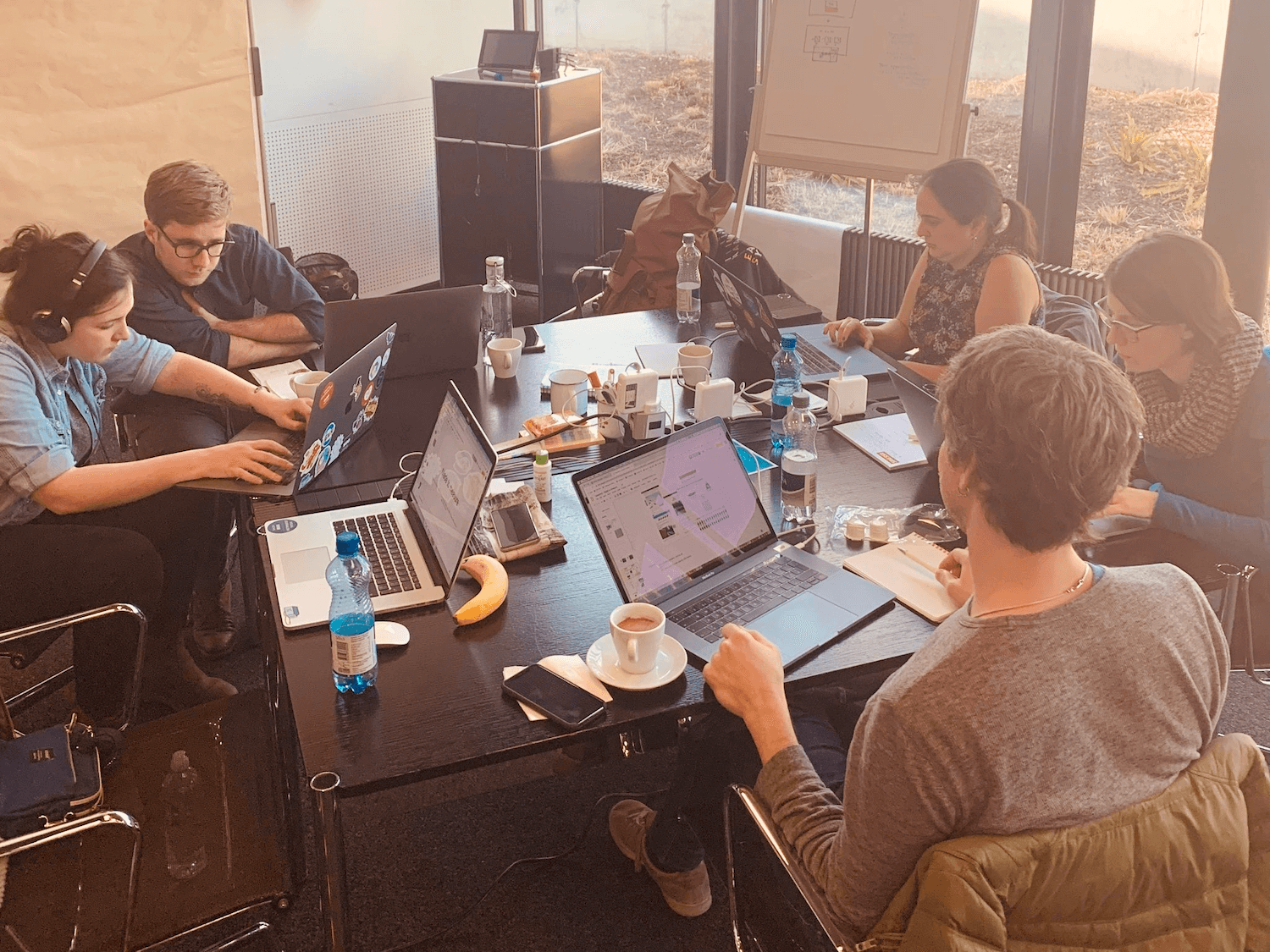More Solutions for Multilingual Newsrooms: DW at Swihack
,Last month, DW participated in the swihack in Bern/Switzerland, hosted by SWI swissinfo.ch. Kay Macquarrie (of DW Innovation) and Elisabetta Tollardo (DW's Head of Infographics) joined journalists, designers, developers and linguists, from the BBC, SWI, and NZZ to tackle some of the challenges faced by multilingual newsrooms. Participants spent two days developing solutions and better tools–ideally with an open source concept. In this post, we're documenting the great work done by Kay's and Elisabetta's teams.
1. No more complex dashboards, no more copy/paste: How to produce multilingual text overlays for social media videos, hands down**
After giving a brief lightning talk on how to easily produce multilingual subtitles with a tool already in (beta) use at Deutsche Welle, Kay Macquarrie teamed up with six colleagues to answer this question:
Is there a simpler way to provide translated text overlays for (increasingly popular) web videos? An approach that saves editors/content producers a lot of time, as they don't have to handle "heavy" editing software like Adobe Premiere anymore and are also spared a lot of tedious copy/paste work?
As it turned out – after quite a bit of interdisciplinary collaboration – there is a solution. It involves a new, web-based workflow and the creation of overlay text translations via meta-data-rich formats TTML and SSA (which was originally created for Karaoke machines). You can check out the technical details in the following chart:
Once the workflow had been established, it was time for a test run: Using a number of open source tools, the team produced an Arabic video with animated overlays – and then created a second version in English. This worked just fine, despite the extra text alignment challenge (Arabic script is written from right to left):
You can watch the full videos by following this link to Kay's swihack GDrive folder. For more details on the project, check out the presentation slides and the documentation.
All in all, team "no more copy/paste" (and everybody else) was more than happy with the results. A possible task for the next hackathon: Create a GUI–and an MVP.
2. Do you know the weight of an elephant? How to make visual comparisons more relatable, all around the globe
Elisabetta's team went beyond written languages and translation. Instead, the hackers put their focus on global visual communication, i.e. images, infographics, and illustrations. The aim was to make specific stories and references more relevant to specific audiences:
Working with colleagues from the BBC and SWI, Elisabetta developed an idea for an open-source tool that can "translate" visual references for units of measure. Now what does that mean exactly?
We often say that something is "three times the height of the Eiffel Tower" or "ten times the size of Central Park"–but that doesn't mean much to an Asian or African audience.
So the team prototyped Made to Measure, a unit converter tool that allows journalists and designers to use alternative visual references and is based on data collected from audiences worldwide.
For instance, when comparing something to the height of a mountain, the tool would suggest Mount Fuji for a Japanese audience, the Aconcagua for a Latin American one, and so on.
The team eventually used the tool for a story on a major cocaine seizure in Costa Rica (5 tonnes), and produced different visual references for different audiences. For the Indian market, the weight of the confiscated drugs is compared to the weight of one elephant, in Japan 84 packs of rice serve as a reference, and in Brazil it’s 333 packs of beans.
Quite a handy tool that will certainly facilitate visual communication around the globe. swihack hosts and participants thought so as well: Made To Measure went on to win the hackathon.
Having received lots of positive feedback, the team has decided to keep developing this open-source project and collect a lot more visual references.
The Made To Measure presentation can be found here. There's also a repository (including instructions on how to get involved) on GitHub.
More swihack resources
The full swihack presentation session is available on YouTube.
An overview of swihack results is documented here.
Finally, you can relive the hackathon and check for follow-ups on Twitter.
It's safe to say that swihack was a great, inspiring event. Thanks to everybody involved!
Foto: SWI
